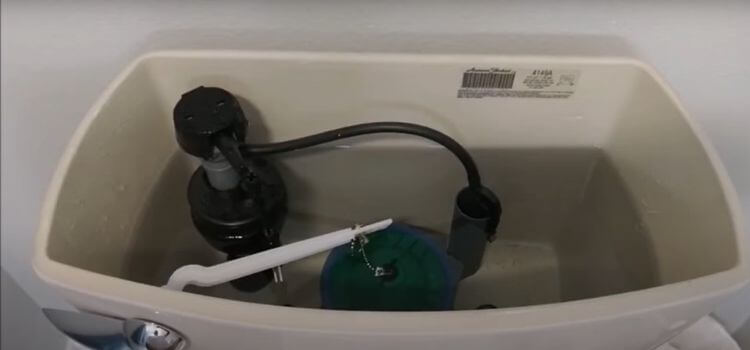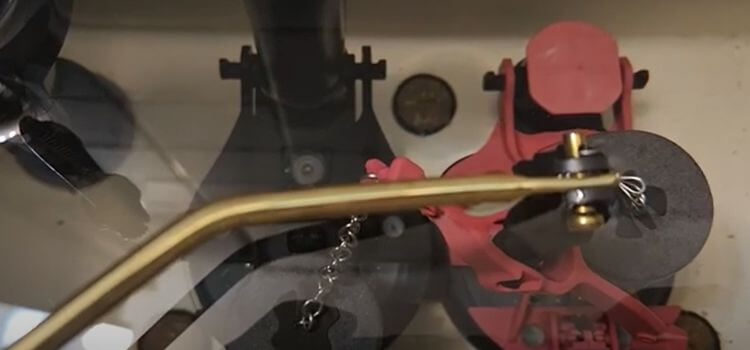American Standard 4370A toilets may experience issues with flushing efficiency and occasional leaks. Regular maintenance can mitigate these problems.
American Standard 4370A toilets are famous for their design and functionality. Yet, users sometimes face issues that impact performance. Common problems include inefficient flushing and leaks. These issues can often be traced to worn-out components or improper installation. Addressing these concerns promptly ensures the toilet performs optimally.
Regular inspections and maintenance play a crucial role. Homeowners can often resolve minor issues themselves. For more complex problems, seeking professional help is advisable. Ensuring proper installation from the beginning can prevent many of these issues. Overall, staying proactive can extend the lifespan of your American Standard 4370A toilet.

American Standard Vormax 4370A Problems Common Issues
The American Standard 4370A toilet is popular due to its durability and efficiency. Yet, users sometimes need help with problems. Common issues include leaks, low water pressure, and flushing problems.
Leaks
Leaks can be frustrating, and wastewater. Common causes of leaks in the American Standard 4370A include:
- Worn-out flapper: A damaged flapper can cause continuous water flow.
- Loose connections: Loose bolts or connections can lead to leaks around the base.
- Cracked tank: A crack in the tank can cause water to seep.
To identify leaks:
- Check for water around the base.
- Use food colouring in the tank to see if it seeps into the bowl without flushing.
- If you notice any of these problems, consider replacing the flapper, tightening connections, or checking for cracks.
Low water pressure can affect the toilet’s performance. The common causes for low water pressure are:
- Clogged pipes: Debris in the pipes can restrict water flow.
- Faulty fill valve: A malfunctioning fill valve can limit water entering the tank.
- Low water supply: Ensure the main water supply is fully open.
Clean the pipes, replace the fill valve, or check the water supply to resolve low water pressure. Regular maintenance can prevent these issues.
Flushing problems can be annoying and reduce the toilet’s efficiency. Common causes for flushing issues include:
- Clogged trapway: Debris in the trapway can block water flow.
- Low water level: Ensure the water level in the tank is adequate.
- Worn-out flapper: A damaged flapper can prevent proper flushing.
To fix flushing problems, clear any debris from the tramway, adjust the water level, or replace the flapper. These simple steps can improve the toilet’s performance.
Read Also: American Standard Vormax Flushing Problems
Causes Of Leaks
The American Standard 4370A toilet is known for its efficiency and design, but it can sometimes experience issues like leaks. Understanding the causes of leaks can help in fixing them quickly.
Worn Out Seals
One of the most common causes of leaks in the American Standard 4370A toilet is worn-out seals. Seals play a crucial role in preventing water from escaping, but they can deteriorate over time for various reasons.
Here are some factors that contribute to worn-out seals:
- Ageing: Seals naturally wear out as they age. The materials can become brittle and lose their effectiveness.
- Mineral Buildup: Hard water can cause minerals to accumulate on the seals, making them less flexible.
- Improper Installation: Seals need to be installed correctly to provide a proper seal.
Signs that your seals are worn out include:
- Water is pooling around the base of the toilet.
- A constant hissing sound coming from the tank.
- The toilet tank doesn’t fill up as it should.
To fix worn-out seals, you can:
- Inspect the seals regularly for signs of wear and tear.
- Replace the seals as soon as you notice any issues.
- Use quality replacement seals to ensure longevity.
Cracked Tank
Another significant cause of American Standard 4370A toilet leaks is a cracked tank. A crack can develop for various reasons and allow water to escape from the tank.
Common causes of a cracked tank include:
- Impact Damage: Dropping a heavy object on the tank can create cracks.
- Manufacturing Defects: Sometimes, the material may have flaws that lead to cracks over time.
- Extreme Temperatures: Sudden temperature changes can cause the porcelain to crack.
Signs that your tank is cracked include:
- Water leaks from the tank even when the toilet is not in use.
- Visible cracks or lines on the tank surface.
- A decrease in water pressure in the tank.
To address a cracked tank, you can:
- Inspect the tank regularly for any signs of damage.
- Use a tank repair kit for minor cracks.
- Consider replacing the entire tank if the damage is extensive.
Low Water Pressure
Experiencing low water pressure in your American Standard 4370A toilet can be frustrating. The toilet may take longer, or the flush might need to be stronger. Identifying and solving these issues can restore your toilet’s performance.
Mineral Buildup
Mineral buildup is a common cause of low water pressure in toilets. Over time, minerals like calcium and magnesium accumulate in the water lines. This buildup can restrict water flow, leading to reduced pressure.
Here are some signs of mineral buildup:
- Slow-filling toilet tank
- Weak flush
- Visible deposits around water outlets
To address mineral buildup, consider these steps:
- Turn off the water supply to the toilet.
- Flush the toilet to empty the tank.
- Remove the supply hose and check for blockages.
- Clean the hose with vinegar to dissolve the minerals.
- Reattach the hose and turn on the water supply.
Using a water softener can also help prevent future buildup. Regular maintenance ensures that mineral deposits do not clog your system.
Faulty Water Inlet Valve
A faulty water inlet valve can also cause low water pressure. The inlet valve controls the flow of water into the toilet tank, and if it malfunctions, the water pressure may drop.
Common signs of a faulty inlet valve include:
- The toilet tank fills very slowly
- Unusual noises during the filling
- Water leaking from the valve
To fix a faulty water inlet valve, follow these steps:
- Turn off the water supply to the toilet.
- Drain the toilet tank by flushing.
- Locate the inlet valve and inspect for damage.
- If damaged, replace the inlet valve with a new one.
- Reattach the water supply and turn it on.
Regularly checking the inlet valve can prevent low water pressure issues. Replacing worn or damaged parts ensures optimal performance.
Flushing Problems
The American Standard 4370A toilet is popular for its efficiency and design. Yet users often face flushing problems that can be frustrating and disrupt the toilet’s smooth functioning.
Stuck Flapper
A stuck flapper can cause a weak or incomplete flush. The flapper is the rubber part that lifts to let water flow from the tank to the bowl. When the flapper is stuck, it can lead to several issues:
- Water won’t flow properly.
- The toilet might not flush at all.
- Water might continuously run.
Here are some common reasons for a stuck flapper:
| Reason | Description |
|---|---|
| Debris | Debris can get stuck under the flapper, preventing a proper seal. |
| Warped Flapper | A warped flapper can’t seal the tank properly, leading to leaks. |
| Chain Issues | If the chain is too tight or too loose, it can affect the flapper’s movement. |
To fix a stuck flapper:
- Turn off the water supply.
- Flush the toilet to empty the tank.
- Check for debris and remove it.
- Inspect the flapper for warping and replace it if needed.
- Adjust the chain length for proper movement.
Issues With Flush Handle
The flush handle is crucial for the toilet’s flushing mechanism. Problems with the flush handle can lead to:
- The toilet is not flushing.
- A weak flush.
- Continuous running water.
Don’t worry, you’re not alone. Common issues with the flush handle include:
| Problem | Description |
|---|---|
| Loose Handle | A loose handle won’t lift the flapper properly. |
| Broken Chain | A broken chain means the handle can’t lift the flapper. |
| Corroded Handle | Corrosion can cause the handle to stick or not move at all. |
To fix issues with the flush handle:
- Remove the tank lid.
- Check the handle for looseness and tighten it if necessary.
- Inspect the chain and replace it if it is broken.
- Clean any corrosion or replace the handle if needed.
Regular maintenance can prevent these issues and ensure your toilet functions smoothly.
When To Call A Professional
The American Standard 4370A toilet is famous for its reliability and efficiency. But like any product, it can face issues over time. Knowing when to call a professional can save you time and prevent further damage. This guide helps you understand when professional help is necessary.
Persistent Leaks
The American Standard 4370A water leaks can cause significant damage if not addressed promptly. Persistent leaks require immediate attention from a professional. Here’s why:
- Constant Water Running: If your toilet tank fills continuously, there’s likely a problem with the fill valve or flapper. A plumber can diagnose and fix this quickly.
- Wet Floor Around Toilet: Water pooling around the base indicates a seal issue. To stop leaks, professionals can replace the wax ring or fix the flange.
- High Water Bills: Unnoticed leaks can significantly increase water bills. A professional can help identify and repair hidden leaks.
Ignoring leaks can lead to mould growth and structural damage. If you notice any signs of leakage, call a plumber.
Complex Flushing Issues
Flushing problems can be frustrating and often indicate more profound issues. Here are some common flushing problems that require a professional’s expertise:
- Weak Flush: A weak flush can be due to a clog or low water pressure. Professionals can identify the cause and fix it.
- Double Flushing: If you need to flush twice to clear the bowl, there might be an issue with the flush valve or the tank’s water level.
- Incomplete Flush: When the toilet doesn’t flush all waste, it could be due to a partial clog or a problem with the siphon jet.
Complex flushing issues often require specialized tools and expertise. A professional plumber ensures the problem is correctly diagnosed and repaired.

Frequently Asked Questions
Why Does My Toilet Keep Refilling Every Few Minutes?
Your toilet refills due to a faulty flapper, a leaking fill valve, or a misadjusted float. Fix these issues to stop the refilling.
Why Does My Old American Standard Toilet Keep Running?
Your old American Standard toilet keeps running due to a faulty flapper, fill valve or overflow tube. Inspect these parts for wear or damage. Replacing defective components often resolves the issue.
Why Does My Toilet Run For 5 Seconds Then Stop?
Your toilet might run for 5 seconds due to a faulty flapper, float adjustment, or fill valve. Check and fix these parts.
Why Is My American Standard Vormax Toilet Leaking?
Your American Standard Vormax toilet may leak due to a faulty flapper, worn-out seal, or a cracked tank. Check these components.
Conclusion
Understanding the common problems with the American Standard 4370A can help you make informed decisions. Regular maintenance and timely repairs can enhance its longevity. Don’t let minor issues escalate; address them promptly. Your toilet’s performance and your satisfaction depend on proactive care.
